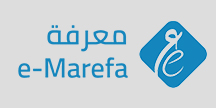The Effects of Code-switching on Teaching English from EFL Students’ Perspective
DOI:
https://doi.org/10.21271/zjhs.27.2.25Keywords:
Code-switching, types of code-switching, reasons of code-switching, functions of code-switching, advantages of code-switching and disadvantages of code-switching.Abstract
The title of this academic study is ‘The Effects of Code-switching on Teaching English from EFL Students’ Perspective. The main purpose of this study is to shed light on the effects of code-switching in teaching. The main research questions of this study are what are the main purposes and benefits of code-switching in teaching?
To obtain data, for this study an open-ended questionnaire is used. The participants are 120 senior students at Salahaddin University-Erbil/ College of Languages and College of Education/ English Departments and Lebanese French University/ College of Languages and College of Education/ English Departments. The senior students were required only to take part in the questionnaire intentionally because when students reach the final year of their study at university; they know and understand very well in what year at university while studying the students will need to switch codes from the language of instruction to their first language. To analyse the obtained data, the mixed methods research approach involving both quantitative and qualitative methods was used by the researcher.
This study concluded that code-switching has some advantages for the freshman students; they switch codes from the language of instruction to their first language because of some reasons. First, they do not want to face misunderstanding when they are in communication with their instructors in teaching and learning. Second, freshman students switch codes when they want to focus on some information. Third, they switch codes not to interrupt the discussion. Fourth, they switch codes for using of the native equivalent words in the language of instruction. Fifth, performing code-switching in teaching helps freshman students to learn new words and terms easily and quickly in the language of instruction. Sixth, when freshman students are allowed to switch codes, many of them are involved in daily activities. However, it should be noted that code-switching should not be done when the freshman students pass the first year because, if this happens in last years of the study; students are unable to learn and use the language of the instruction at their departments perfectly. Therefore, code-switching should be done in the first year of the study, but accurately and carefully.
References
Abdulla, I., A. 2015. Kurdish-English Code-Switching in Facebook. Zanco Journal of Humanity Sciences, 19 (6). PP. 161-176.
Ayeomoni, M., O. 2006. Code-Switching and Code-Mixing: Style of Language Use in Childhood in Yoruba Speech Community. Nordic Journal of African Studies, 15(1), pp.90-99.
Bhooth, A., Azman, H. & Ismail, K. 2014. The role of the L1 as a scaffolding tool in the EFL reading classroom. Elsevier, 118, pp. 76-84.
Breitenmoser, A. 2020. Code-Switching: The Difference Between Code-Switching and Code-Mixing. Available from: https://www.youtube.com/watch?v=KCUFvjQnc1s. Accessed [January 15, 2022].
Brice, A. & Brice, R.2009. Language development: Monolingual and bilingual acquisition. Old Tappan, NJ: Merrill/Prentice Hall.
Cook, V. 2002. Portraits of the L2 User. Clevedon: Multilingual Matters.
Dykhanova, A. 2015. ‘Functions of Code-Switching and Attitudes toward Them: A Case Study’, MA thesis, Eastern Mediterranean University, Gazimağusa: North Cyprus.
Eldridge, J. 1996. Code-switching in a Turkish secondary school. ELT Journal, 50 (4), pp. 303-311.
Gumperz, J., J.1982. Discourse Strategy. Cambridge: Cambridge University Press.
Hippler, J, P. 2018. Internal Consistency Reliability. New York: Haper and Row.
Jukil, A., M. 2012. Motivations of Code-Switching in the Classrooms of the Department of English. AL-Ustath Journal for Human and Social Sciences, 20, pp. 522-535.
Macaro, E. 2001. Analyzing Student teacher's Code Switching in Foreign Language Classrooms.: Theories and Decision Making. The Modern Language Journal, 85(4), pp. 531-548.
Mackey, A. & Gass, S., M. 2012. Research Methods in Second Lanaguage Acquisition. Oxford: Blackwell Publishing Ltd.
Memory, N., D. Nkengbeza, D. & Liswaniso, C., M. 2018. The Effects of Code Switching on English Language Teaching and Learning at Two Schools in Sibbinda Circuit. International Journal of English Language Teaching, 6 (5), pp. 56-68.
Myers-Scotton, C. 1993. Social Motivation for Code-Switching. Evidence form Africa. Oxford: Clarendon Press.
Richards, J. and Schmidt, R. 2002. Longman dictionary of language teaching and applied linguistics. (3rd Ed). New York: Longman.
Romaine, S. 1995. Bilingualism. (2nd Ed). Oxford: Blackwell.
Sert, O. 2005. The Functions of Code Switching in ELT Classrooms. The Internet TESL Journal, 11(8), pp. 1-6.
Singh, S., K.,s. & Abdul Nasir, A., Q., B. 2012. Code-switching among Military Cadet Officers during Group Interaction. Elsevier, 66, pp. 64-75.
Spolsky, B. 2008. Sociolinguistics. Oxford: Oxford University Press.
Smith, A. 2018. Code-switching and code-mixing. Yale University: USA.
Trudgil, P.2000. Sociolinguistics. London: Penguin.
Willis, J. 1981. Teaching English through English. Harlow: Longman.
Downloads
Published
How to Cite
Issue
Section
License
Copyright (c) 2023 Sangar Othman Ibrahim.

This work is licensed under a Creative Commons Attribution-NonCommercial-ShareAlike 4.0 International License.
Except where otherwise noted, content on this site is licenced
under a Creative Commons Attribution License 4.0 (CC BY- 4.0)










